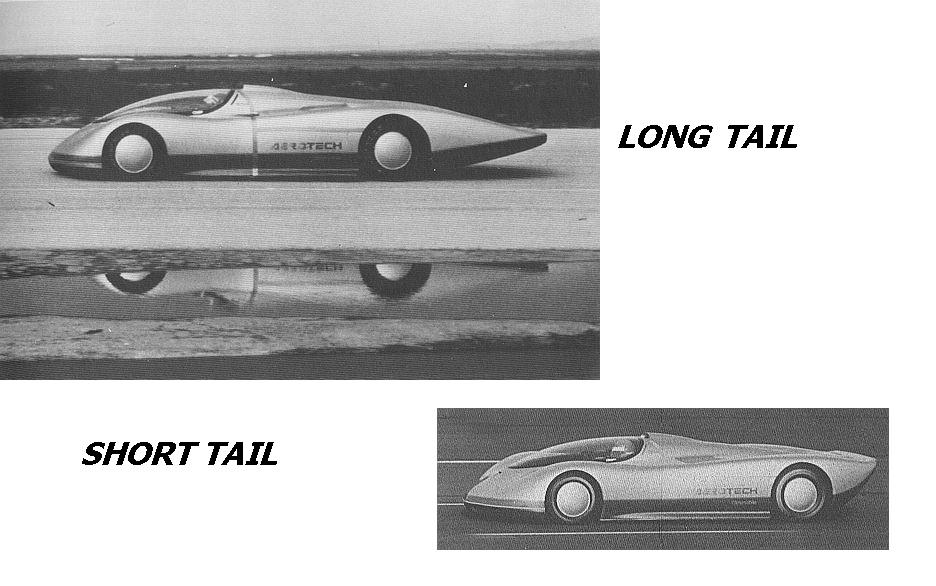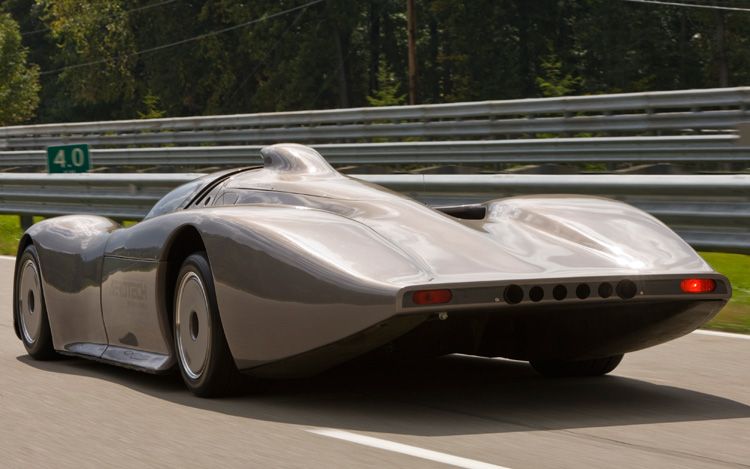The problem with concept cars I've looked into before is that they are mostly about what's happening up top (the visual), and not so much the function.
With mid-engined concepts from the 1960's-1970's the airflow underneath was neglected and got all messed up (via engine bay openings below), raising Cd numbers. I suggest seeking out images of the belly, perhaps a plastic model photo would reveal a lot and answer your question
snakub.
As far as the nose being less pointy, we have assumed in aero-template exercises that the front half of the car no matter what the shape is (within reason) will get the desired attachment and pressurization of air for the flow of air around the body to form.
In my opinion, if the engine and transmission were not over the real axle, the underbelly could sweep upward eliminating the need for a boat-tail. However, we have what we have and yes a longer tail would help in this case.
Example: Oldsmobile Aerotech concept car
Oldsmobile Aerotech concept car photos

More Aerotech:
http://deansgarage.com/2011/1987-oldsmobile-aerotech/

Wildcat Concept:
http://www.supercars.net/cars/273.html

Quote:
|
The Wildcat took performance to the next level with four-wheel drive and a rear-mounted engine prepared by noted racing specialist McLaren Engines. Based on Buick's 3.8-liter V-6 block, the experimental powerplant has 24 valves, dual overhead camshafts and programmable sequential-port fuel injection. The formidable V-6 is visible through an opening in the Wildcat's rear deck.
|
EDIT: On a second look, airflow over the exposed engine could be problematic. However, a simple cover would fix that.
http://www.supercars.net/cars/273.html
